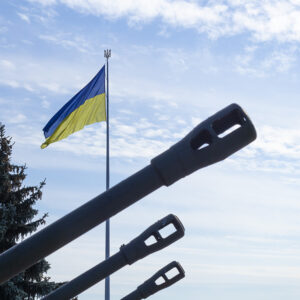Fresh off a surprise visit to Kyiv, President Biden vowed Tuesday that America “will not tire” in its support for Ukraine. To deliver on that commitment, Biden must hold together the bipartisan coalition that’s given Ukraine generous military assistance. Immediately granting Kyiv’s requests for ATACMS (Army Tactical Missile System) missiles could help Ukraine retake additional territory and show Congress that U.S. assistance is paying dividends.
Despite Russia’s battlefield failures, Putin remains determined. He has mobilized hundreds of thousands of troops and appointed a new commander tasked with taking the rest of Ukraine’s eastern Donbas region. The early stages of that offensive are underway.
Kyiv is planning its own counteroffensive, widely expected to occur this spring. To help, the West has stepped up training for Ukrainian troops and pledged additional tanks, armored vehicles and materiel, while Kyiv is mobilizing more soldiers and building additional units.
The good news: Russia’s battered military, increasingly reliant on poorly trained troops, probably can’t pull off large-scale offensive operations — a fact perhaps lost on Putin, who seems impatient for success.
The bad news: That’s not the only way Moscow could potentially salvage the war. Putin likely predicts that if Ukraine’s counteroffensive fails and the conflict grinds on with no end in sight, Western resolve will wane — and with it, the money and materiel on which Kyiv’s war effort depends.
Ukraine has solid prospects for success. Its military has proven it can achieve results when adequately resourced.
Ukraine’s previous counteroffensives in the country’s south and east capitalized on Russian manpower shortages. But Russia’s forces in Ukraine have roughly doubled, thanks to mobilization, and now have considerably less territory to defend following Russia’s retreats last year. Meanwhile, Russia has built fortified defensive lines stretching across the battlefield.
The war will likely drag on through 2023 and beyond. If so, Ukraine’s Western support will face two interrelated threats.
The first concerns the availability of military aid, particularly artillery ammunition. For all the attention on tanks and fighter jets, artillery remains central to this war. With its stocks of Soviet-made munitions largely exhausted and its defense industry decimated, Kyiv depends on Western supplies. But Western stockpiles are dwindling, and Ukrainian artillery shell consumption far outstrips Western production. All told, annual U.S. and European production would last Ukraine about three months.
Washington is working to increase output, and the EU is mulling similar measures. But production won’t increase significantly until next year, meaning the West must dig deep over the medium term. Although Moscow faces its challenges with ammunition stocks and production, Russia’s defense industrial base is running on a war footing and doesn’t face commercial and regulatory constraints that impede Western industry.
The Pentagon hopes that helping Ukraine’s military transition to a style of fighting that emphasizes maneuver rather than artillery-centric attritional warfare will reduce artillery consumption. Ukraine has conducted successful maneuvers only where Russian lines were weak. Kyiv will likely enjoy no such luxury going forward.
The second threat concerns political support. Most American lawmakers recognize that aid for Ukraine represents a cost-effective investment in U.S. security. Yet a small but vocal minority staunchly opposes further assistance. A growing number of voters, particularly conservatives, similarly question whether to continue aiding Kyiv.
Funding from the Ukraine aid bill Congress passed in December will run out as early as this summer, meaning lawmakers must agree on another one. As U.S. officials have warned Kyiv, that bill will be tougher to pass.
If Ukraine’s counteroffensive stalls, these challenges could compound. Western policymakers may be reluctant to invest in what many will wrongly diagnose as a stalemate. In fact, the conflict will remain an intense war of attrition; Ukraine’s military will need a steady supply of aid lest Russia gradually grinds it down. Some will be tempted to push Kyiv toward peace talks, even though Putin has shown no interest in peace and would likely exploit a potential ceasefire to gather Russia’s strength for a follow-on war.
Biden can get ahead by immediately granting Kyiv’s repeated requests for ATACMS missiles. This system, whose range far exceeds Ukraine’s current Western-supplied rocket artillery, can help blunt Moscow’s offensive and weaken Russia’s ability to resist Ukrainian advances. Also, ATACMS can help reduce Kyiv’s artillery shell consumption by facilitating maneuver while facilitating Ukrainian gains that inspire further Western support.
In Kyiv, Biden reiterated his pledge to support Ukraine “for as long as it takes.” What he does now will go a long way toward determining how long that is.

